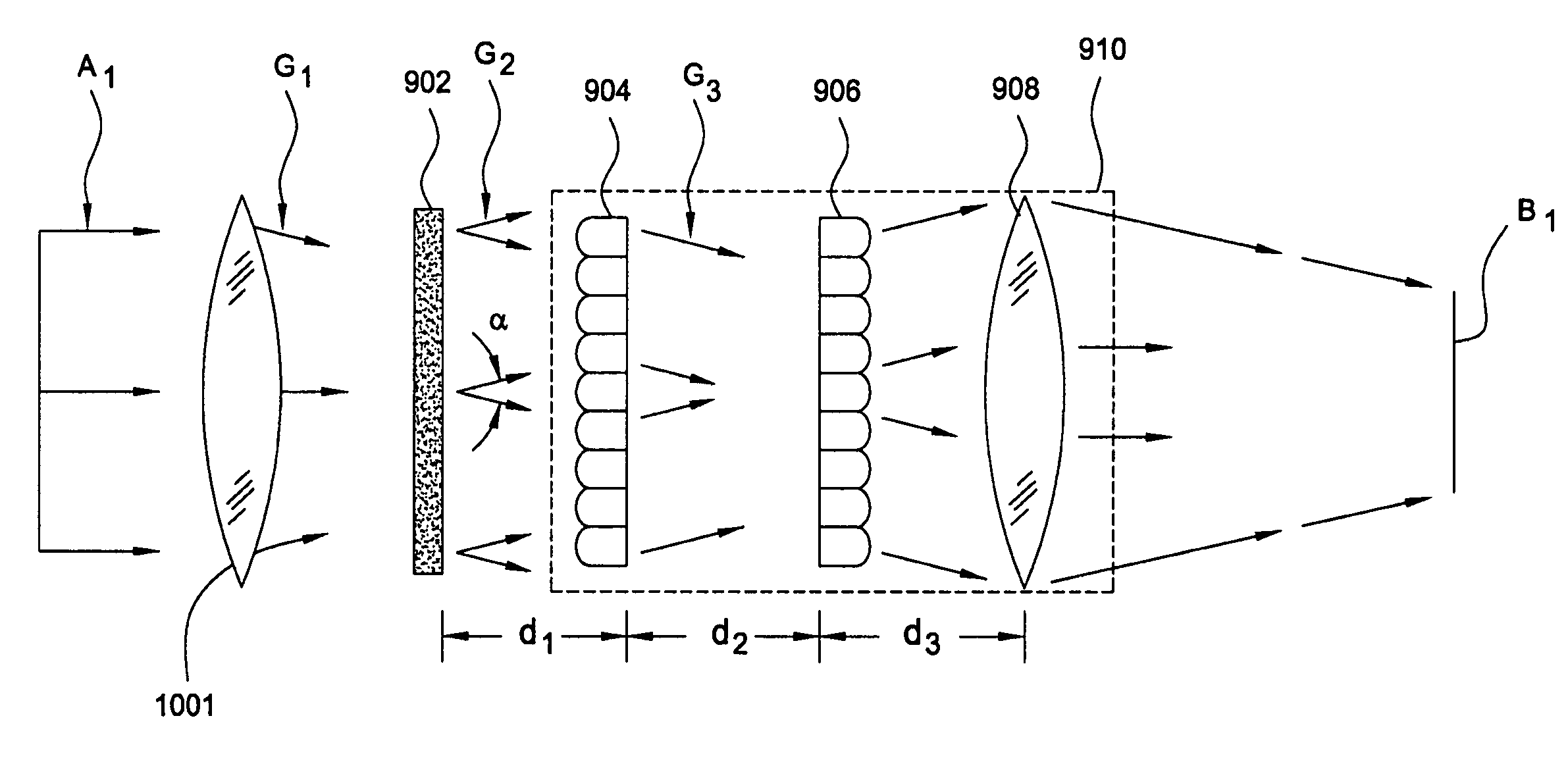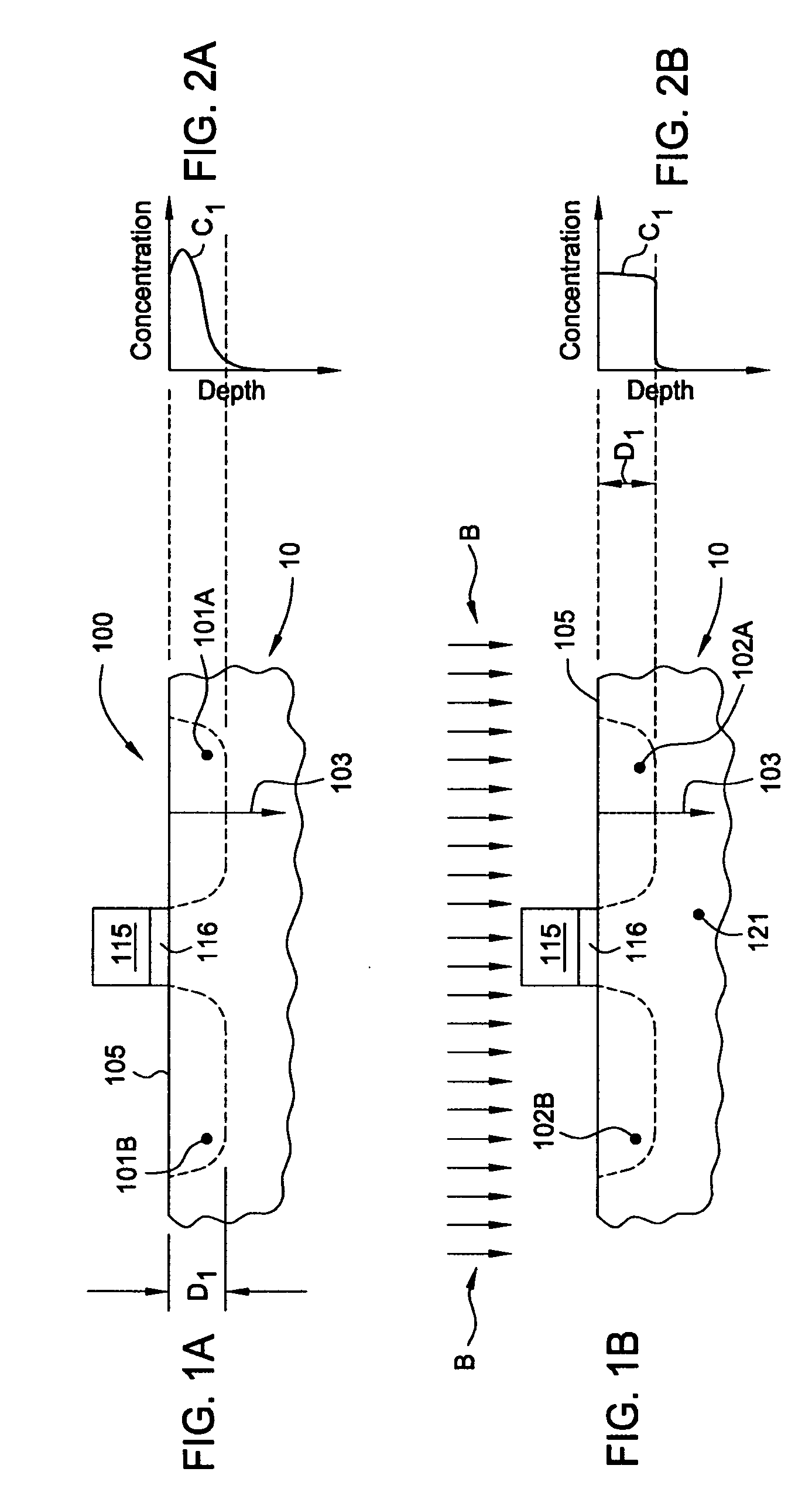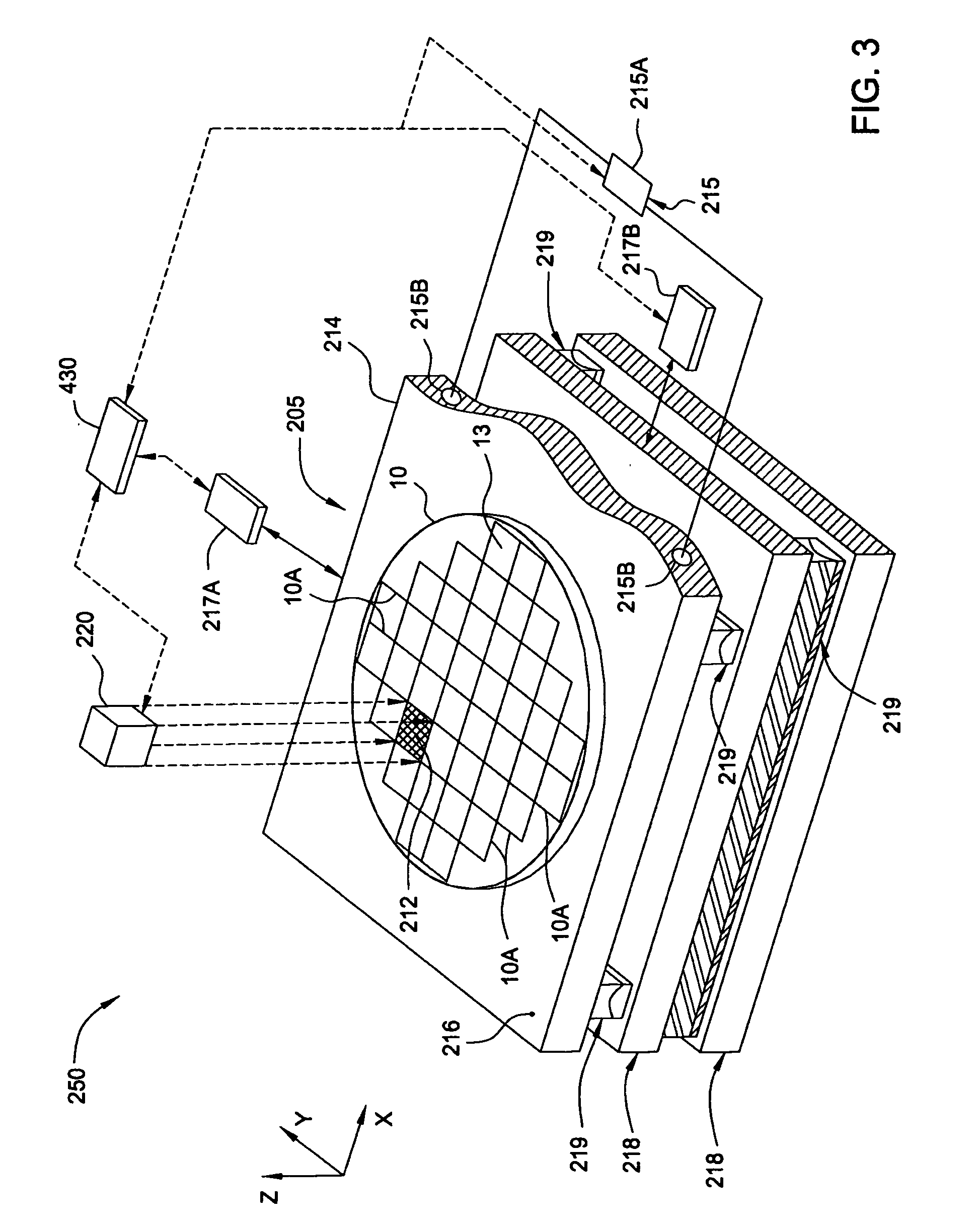Apparatus and method of improving beam shaping and beam homogenization
a technology of apparatus and beam, which is applied in the direction of manufacturing tools, instruments, optical elements, etc., can solve the problems of only dissipating heat into the surrounding space or structures, limiting the speed of heat up and cooling down the wafer, and heating the entire wafer
- Summary
- Abstract
- Description
- Claims
- Application Information
AI Technical Summary
Benefits of technology
Problems solved by technology
Method used
Image
Examples
Embodiment Construction
[0041]The present invention generally relates to an optical system that is able to reliably deliver a uniform amount of energy across an anneal region 212 (FIG. 3) contained on a surface of a substrate. In one embodiment, the optical system is adapted to deliver, or project a uniform amount of energy, or “image,” having a desired two-dimensional shape to a desired region on the surface of the substrate. Typically, the anneal regions 212 may be square or rectangular in shape and range in area between about 4 mm2 and about 1000 mm2. Generally, the optical system and methods of the present invention are used to preferentially anneal one or more regions found within the anneal regions 212 by delivering enough energy to cause the one or more regions to re-melt and solidify.
[0042]In general the term “substrates” as used herein can be formed from any material that can benefit from the pulse laser annealing process, such as a material that has some natural electrical conducting ability or a...
PUM
| Property | Measurement | Unit |
|---|---|---|
| wavelengths | aaaaa | aaaaa |
| temperature | aaaaa | aaaaa |
| temperature | aaaaa | aaaaa |
Abstract
Description
Claims
Application Information
 Login to View More
Login to View More - R&D
- Intellectual Property
- Life Sciences
- Materials
- Tech Scout
- Unparalleled Data Quality
- Higher Quality Content
- 60% Fewer Hallucinations
Browse by: Latest US Patents, China's latest patents, Technical Efficacy Thesaurus, Application Domain, Technology Topic, Popular Technical Reports.
© 2025 PatSnap. All rights reserved.Legal|Privacy policy|Modern Slavery Act Transparency Statement|Sitemap|About US| Contact US: help@patsnap.com



